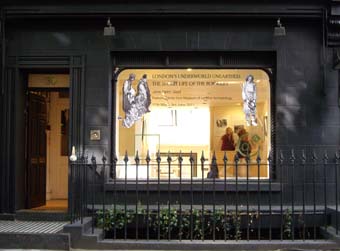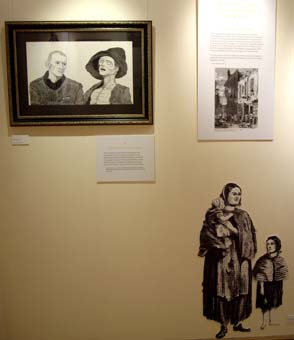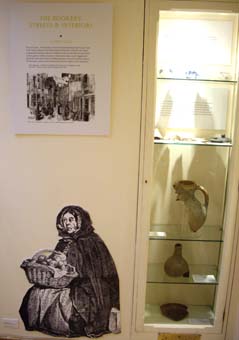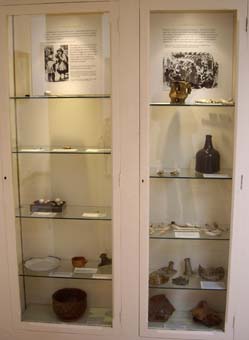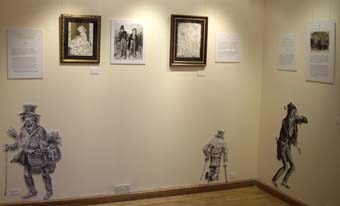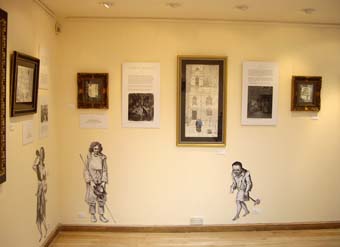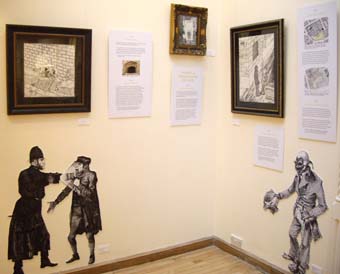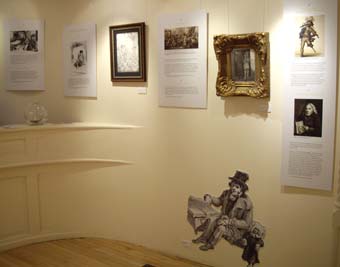If you missed my recent show with Museum of London Archaeology at the Coningsby Gallery, you can get a flavour of the show in the following images…
I wanted some subversive Rookery types looking out from the window onto the street to draw people in – this worked!
There were eleven sections in all, which worked their way around the gallery… The first was ‘Psychogeographical Echoes’, which rooted the exhibition in the ancient history of St. Giles in the time of the Leper Hospital… The section on ‘The Holy Land’ followed, about the Irish ghetto that existed on the Central Saint Giles site in the West End.
‘The Rookery: Streets and Houses’ section featured the archaeology dug up by Museum of London Archaeology from the Central Saint Giles site, alongside descriptions from 19th c. writers who visited there…
There were five cabinets in all displaying the archaeological finds…
This section featured descriptions and images of the transient population of St. Giles in the 18th / 19th centuries, alongside their modern crack addict equivalent.
‘Gin Epidemic! Geneva Shops & Gin Palaces’ featured the history of gin consumption in the 18th and 19th c. in the Rookery and what caused it. The ‘Crime & The Police’ section displayed characters engaged in the ‘cadging ramble’, Covent Garden link boy Little Cazey, who ended up in Bridewell and numerous descriptions of dangerous characters who frequented the Rookery and made it their home…
Sian Anthony (Lead Archaeologist in the museum excavations) even found one of the Rookery subterranean escape routes! How exciting is that?! The photo of it is displayed here amongst the paintings…
The Beggars Opera was my favourite section, highlighting infamous old St. Giles characters who dwelt in the Rookery and begged in the locality – like Old Simon Edy (who had a pitch outside St. Giles-in-the-Fields church) and Billy Waters, King of the Beggars. I also like ‘Bob, The Dancing Dog’… The final section was ‘Death & St. Giles’ which depicted the long association between the parish and death: for centuries St. Giles stood at the gateway between this world and the next.

